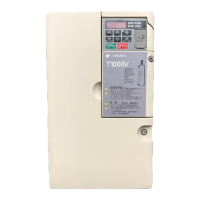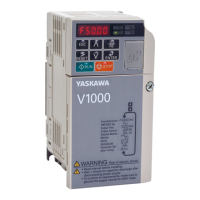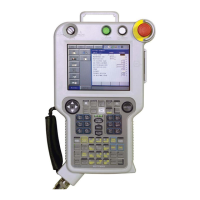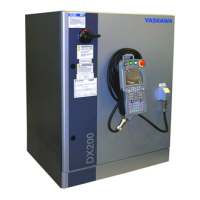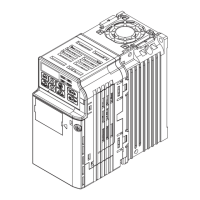6.10 Troubleshooting without Fault Display
YASKAWA ELECTRIC SIEP C710616 30B YASKAWA AC Drive T1000A Technical Manual 309
Troubleshooting
6
u Noise From Drive or Output Lines When the Drive is Powered On
u Ground Fault Circuit Interrupter (GFCI) Trips During Run
u Connected Machinery Vibrates When Motor Rotates
n Unexpected Noise from Connected Machinery
n Oscillation or Hunting
u PID Output Fault
u Insufficient Starting Torque
Cause Possible Solutions
Relay switching in the drive generates
excessive noise.
• Lower the carrier frequency (C6-02).
• Install a noise filter on the input side of drive input power.
• Install a noise filter on the output side of the drive.
• Place the wiring inside a metal conduit to shield it from switching noise.
• Ground the drive and motor properly.
• Separate the main circuit wiring and the control lines.
• Make sure wires and the motor have been properly grounded.
Cause Possible Solutions
Excessive leakage current trips GFCI.
• Increase the GFCI sensitivity or use GFCI with a higher threshold.
• Lower the carrier frequency (C6-02).
• Reduce the length of the cable used between the drive and the motor.
• Install a noise filter or reactor on the output side of the drive. Set the carrier frequency to 2 kHz when connecting a reactor.
Cause Possible Solutions
The carrier frequency is at the resonant frequency of the connected
machinery.
Adjust the carrier frequency using parameters C6-02 through C6-05.
The drive output frequency is the same as the resonant frequency
of the connected machinery.
Place the motor on a rubber pad to reduce vibration.
Cause Possible Solutions
Insufficient tuning.
Perform Auto-Tuning.
Refer to Motor Performance Fine-Tuning on page 268.
Gain is too low when using PID control. Refer to b5: PID Control on page 127 for details.
The frequency reference is assigned to an external source and the
signal is noisy.
• Ensure that noise is not affecting the signal lines.
• Separate main circuit wiring and control circuit wiring.
• Use twisted-pair cables or shielded wiring for the control circuit.
• Increase the analog input time filter constant (H3-13).
The cable between the drive and motor is too long.
• Perform Auto-Tuning.
• Reduce the length of the cable.
Cause Possible Solutions
No PID feedback input.
• Check the multi-function analog input terminal settings.
• Set multi-function analog input terminal A1, A2, or A3 for PID feedback (H3-02, H3-10, or H3-06 = “B”).
• A signal input to the terminal selection for PID feedback is needed.
• Check the connection of the feedback signal.
• Check the various PID-related parameter settings.
• No PID feedback input to the terminal causes the value detected to be 0, causing a PID fault and the drive to operate
at max frequency.
The level of detection and the target value do not correspond with
each other.
• PID control keeps the difference between target and detection values at 0. Set the input level for the values relative to
one another.
• Use analog input gains H3-03 and H3-11 to adjust PID target and feedback signal scaling.
Reverse drive output frequency and speed detection. When output
frequency rises, the sensor detects a speed decrease.
Set PID output for reverse characteristics (b5-09 = 1).
Adjustment made to PID parameter settings are insufficient. Refer to b5: PID Control on page 127 for details.
Cause Possible Solutions
Auto-Tuning has not yet been performed (required for vector
control modes).
Perform Auto-Tuning. Refer to Motor Performance Fine-Tuning on page 268.
The control mode was changed after performing Auto-Tuning. Perform Auto-Tuning again.
Only Stationary Auto-Tuning was performed. Perform Rotational Auto-Tuning.

